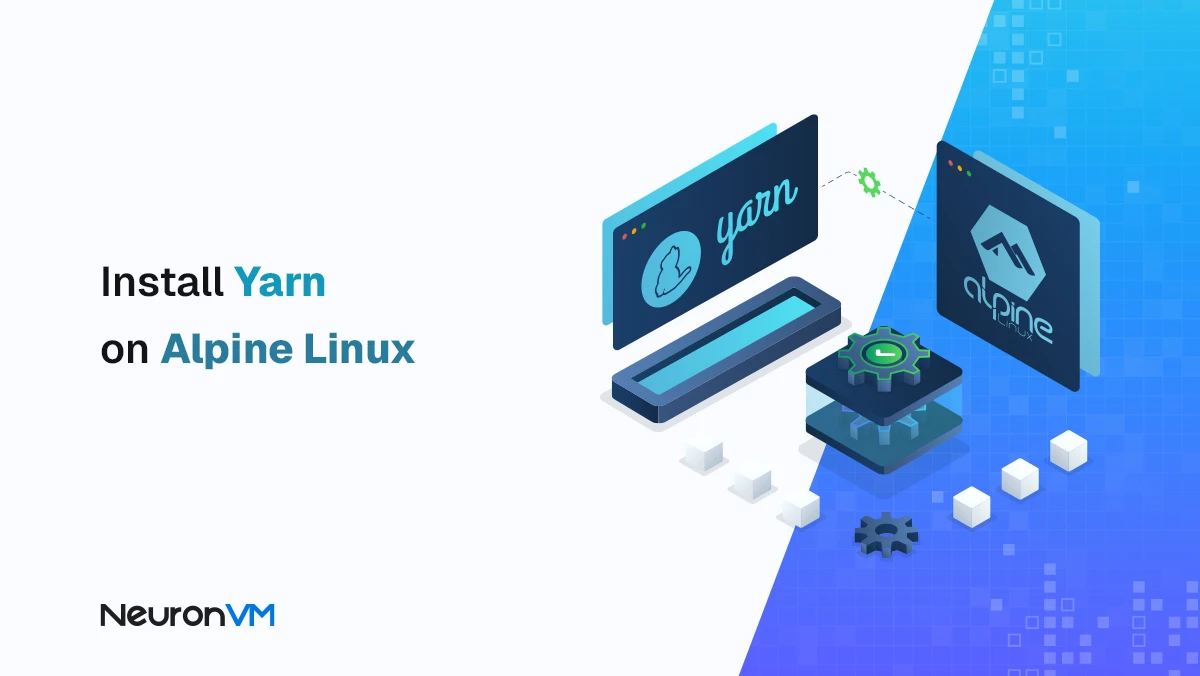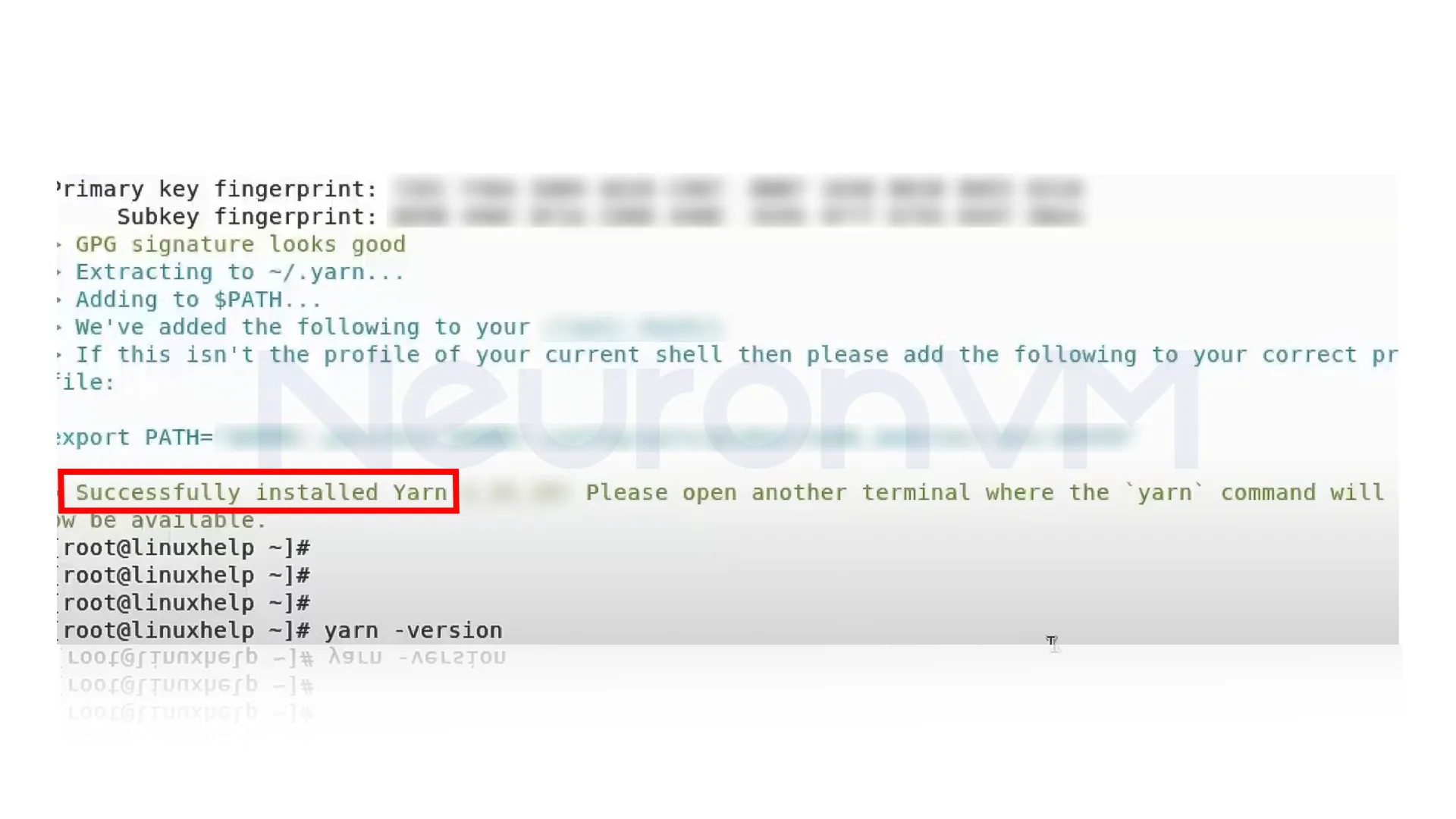How to Install Yarn on Alpine Linux [Step-by-Step Guide]

 8m
8m
 1 comments
1 comments
Yarn is one of the most popular package managers for JavaScript, and also a great alternative to npm due to its speed and dependency management capabilities, on the other hand, Alpine Linux, as a lightweight and modular Linux distribution, is an ideal choice for container environments like Docker due to its low size and also high performance, In this article, we will go through a step-by-step guide on how to Install Yarn on Alpine Linux, along with some expert tips and tricks.
Prerequisites
Before starting the installation, make sure your system meets the following minimum requirements:
1 GHz processor or faster
At least 1 GB of RAM
At least 10 GB of storage
If you are using Alpine in a server or VPS environment, it is recommended to use a Linux VPS Server to access more stable resources and faster speeds.
Step-by-step Guide to Install Yarn on Alpine Linux
Step 1: Update System Packages
First, open the terminal and update the system packages:
sudo apk update
Step 2: Install Node.js
To run Yarn, you need to install Node.js, run the following command:
sudo apk add nodejs
Step 3: Verify Node.js installation
To ensure that Node.js was successfully installed, use the following command:
node -v
Step 4: Install Yarn on Alpine Linux
First, add the Yarn repository to the configuration file:
echo "http://dl-cdn.alpinelinux.org/alpine/edge/community" >> /etc/apk/repositories
Then run the installation command:
sudo apk add yarn
You can check if Yarn has been installed correctly by running the command:
And finally, check that Yarn is installed correctly:
yarn --version
Step 5: Yarn Configuration
Yarn uses the npm registry by default, but you can configure it to use a registry of your choice.
To do this, open the “.yarnrc” file in your project path and add the following line:
registry "https://your.registry.url"
Troubleshooting
1- Dependencies:
Some versions of Alpine may not have the packages required for Yarn to work properly, In these cases, you can use tools like apk-cache can help you to check for dependencies.
2- Network issues:
If you get connection errors during the installation process, make sure that the internet is up and the repository URL is reachable, you can easily use ping or curl to test the connection.
3- Repositories misconfiguration:
If the installation fails, you can quickly check that the Yarn repository URL is correctly added to /etc/apk/repositories.
Technical Tips
In some environments, such as Docker, using Alpine Linux with Yarn has significant benefits, and the final image size is reduced.
Professional developers often use the “yarn install –frozen-lockfile” command to ensure that dependencies are consistent across environments, especially when a project is being circulated between multiple development teams at the same time.
In contrast, novice users sometimes encounter errors related to edge repositories or incompatible Node.js versions. The simple solution is to use an LTS version of Node.js and check dependencies before installing.
Advantages and Disadvantages of Installing Yarn on Alpine Linux
Advantages:
Very fast installation of packages
Small system size and low resource consumption
More security than Debian-based systems
Disadvantages:
Sometimes need to manually configure repositories
Possible incompatibility of some packages with the edge versions0000000000
Real-world experience and technical analysis
In real-world projects, developers often use the combination of Alpine Linux and Yarn to build Docker images, and the size of the final image is really reduced and the speed of the project build is increased, For example, in tests conducted by the Facebook development team which is the creator of Yarn, using Yarn on Alpine has made the time to install dependencies about 40% faster than npm on Ubuntu.
Also, in CI/CD environments such as GitLab Runner and GitHub Actions, Alpine performs better than other Debian-based systems due to its lightweight nature and support for Yarn, Of course, in large projects with hundreds of dependencies, it is recommended to use the yarn cache clean option to avoid cache errors, These experiences show that the combination of Yarn and Alpine has significant added value not only in terms of installation, but also in terms of stability and optimization on an industrial scale.
Conclusion
Installing Yarn on Alpine Linux offers developers and its users a combination of speed and simplicity, by following the steps above, you can build a lightweight and stable environment for your JavaScript projects, Using Yarn alongside Alpine not only speeds up the development process but also provides finer control over dependencies and updates, In real-world projects, this combination is one of the best choices for building lightweight and efficient Docker images.
No, Yarn requires Node.js to run.
Because Yarn is located in the "edge/community" repository and needs to be added manually.
In production or Docker environments, use "yarn install --frozen-lockfile" to keep dependencies static.
You might like it

Linux Tutorials
How to Disable and Turn off Hardware Acceleration Chrome

Linux Tutorials
How to Install VPN on VPS Script - Openvpn on VPS

How to Setup and Configure a DNS Server on CentOS





